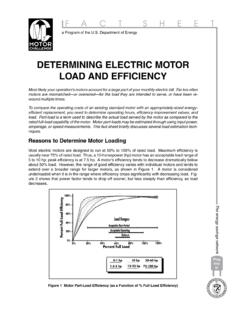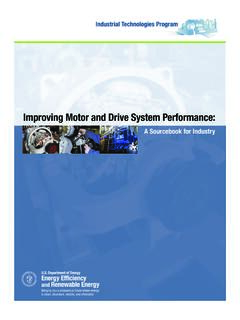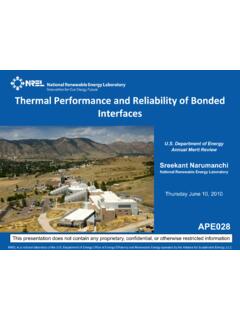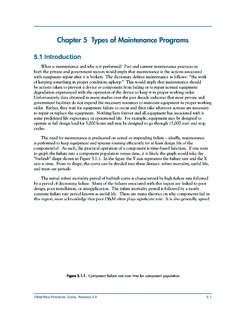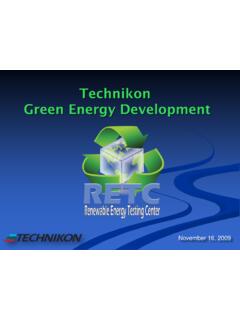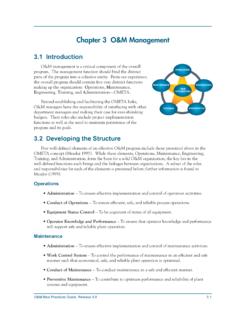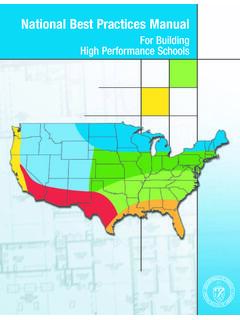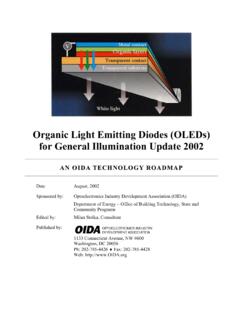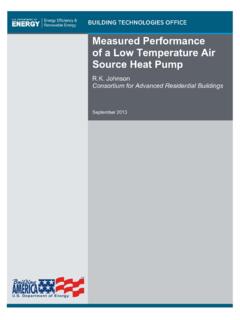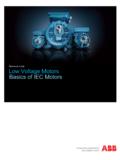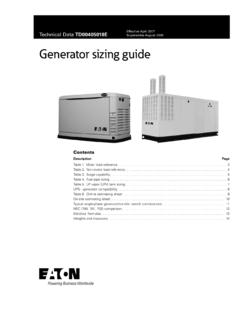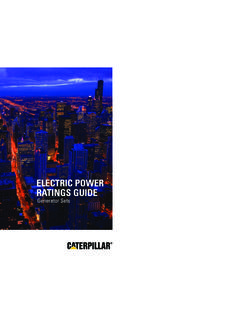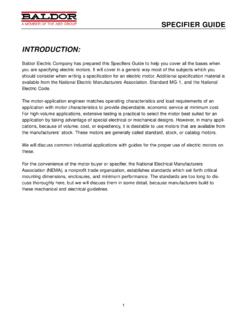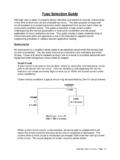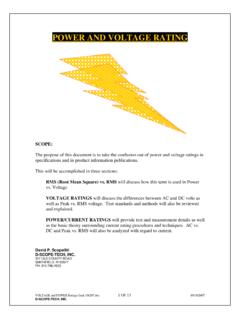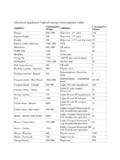Transcription of Buying an Energy-Efficient Electric Motor
1 Buying AN ENERGY-EFFICIENTELECTRIC MOTORE fficiency is an important factor to consider when Buying or rewinding an Electric Motor . This factsheet shows you how to obtain the most efficient Motor at the lowest price and avoid commonproblems. It answers the following frequently asked questions:1. Why is improving Motor efficiency important?2. What is an Energy-Efficient Motor ?3. What efficiency values should I use when comparing motors?4. When should I consider Buying an Energy-Efficient Motor ?5. When is an Energy-Efficient Motor cost effective?
2 6. Should I rewind a failed Motor ?7. What design factors should I consider when choosing a new Motor ?8. How should I begin a Motor efficiency improvement program?9. How can I obtain Motor prices and efficiency values?10. Where can I find additional information?1. Why is improving Motor efficiency important?Over half of all electrical energy consumed in the United States is used by Electric motors. Improvingthe efficiency of Electric motors and the equipment they drive can save energy, reduce operatingcosts, and improve our nation s efficiency should be a major consideration when you purchase or rewind a Motor .
3 The annualenergy cost of running a Motor is usually many times greater than its initial purchase price. For example,even at the relatively low energy rate of $ , a typical 20-horsepower (hp) continuously runningmotor uses almost $6,000 worth of electricity annually, about six times its initial purchase What is an Energy-Efficient Motor ? Motor efficiency is the ratio of mechanical power output to the electrical power input, usually ex-pressed as a percentage. Considerable variation exists between the performance of standard andenergy-efficient motors (see Figure 1).
4 Improved design, materials, and manufacturing techniquesenable Energy-Efficient motors to accomplish more work per unit of electricity motors offer other benefits. Because they are constructed with improved manufac-turing techniques and superior materials, Energy-Efficient motors usually have higher service fac-tors, longer insulation and bearing lives, lower waste heat output, and less vibration, all of whichincrease reliability. Most Motor manufacturers offer longer warranties for their most efficient Program of the Department of EnergyFACT SHEETThe energy savings networkPlugintoit!
5 DEPARTMENTOFENERGYUNITEDSTATESOFAMERICAP BTo be considered energy efficient, a Motor sperformance must equal or exceed the nomi-nal full-load efficiency values provided by theNational Electrical Manufacturers Association(NEMA) in publication MG 1. Specific full-loadnominal efficiency values are provided for eachhorsepower, enclosure type, and speed com-bination. A Motor s performance must equalor exceed the efficiency levels given in Table 1of this fact sheet (reprinted from Table 12-10of NEMA MG-1-1993, Rev. 1) for it to be clas-sified as energy efficient.
6 The Energy Policy Act of 1992 (EPACT) re-quires that most general purpose motorsmanufactured for sale in the United States af-ter October 24, 1997, meet new minimum ef-ficiency standards. These standards are iden-tical to the shaded area of Table 1. The Actapplies to 1- through 200-hp general-purpose, T-frame, single-speed, foot-mounted, continuous-rated,polyphase, squirrel-cage, induction motors conforming to NEMA designs A and B. Covered motors are de-signed to operate with 230 or 460 volt power supplies, have open or closed (totally enclosed) enclosures,and operate at speeds of 1200, 1800, or 3600 What efficiency values should I use when comparing motors?
7 When comparing Motor efficiencies, be sure to use a consistent measure of efficiency. Nominal efficiency isbest. Nominal efficiency is an average value obtained through standardized testing of a population of guaranteed efficiency, which is based on nominal efficiency, is slightly lower to take into accounttypical population variations. Minimum guaranteed efficiency is also less accurate, because the value isrounded. Other efficiency ratings, including apparent and calculated, should not be the United States, the recognized Motor efficiency testing protocol is the Institute of Electrical and Elec-tronics Engineers (IEEE ) 112 Method B, which uses a dynamometer to measure Motor output under testing methods yielding significantly different results are used in other countries.
8 The NEMA name-plate labeling system for design A and B motors in the 1- to 500-hp range uses bands of efficiency valuesbased on IEEE 112 When should I consider Buying an Energy-Efficient Motor ? Energy-Efficient motors should be considered in the following circumstances: For all new installations When purchasing equipment packages, such as compressors, HVAC systems, and pumps When major modifications are made to facilities or processes Instead of rewinding older, standard efficiency units To replace oversized and underloaded motors As part of a preventive maintenance or energy conservation Efficiency MotorsHorsepowerEnergy-Efficienct Motors9085807570125102050100200500 Figure 1 Standard and Energy-Efficient Motor PerformancesFigure 1 Standard and Energy-Efficient Motor Performances3 Open MotorsEnclosed Motors1.
9 The shaded area indicates Motor classes covered by the efficiency standards contained within the Energy Policy Act of 1 NEMA Threshold Full-Load Nominal Efficiency Values for Energy-Efficient Motors (from NEMA MG1 Table 12-10) The cost effectiveness of an Energy-Efficient Motor in a specific situation depends on several factors, includingmotor price, efficiency rating, annual hours of use, energy rates, costs of installation and downtime, your firm spayback criteria, and the availability of utility rebates.
10 Check with your utility to determine whether it can fund aportion of your Motor replacement costs through its energy conservation programs. Question 5 addresses meth-ods for evaluating the cost effectiveness of Energy-Efficient When is an Energy-Efficient Motor cost effective?The extra cost of an Energy-Efficient Motor is often quickly repaid in energysavings. As illustrated in Table 2, each point of improved Motor efficiencycan save significant amounts of money each year. In typical industrial appli-cations, Energy-Efficient motors are cost effective when they operate morethan 4000 hours a year, given a 2-year simple payback criterion.
